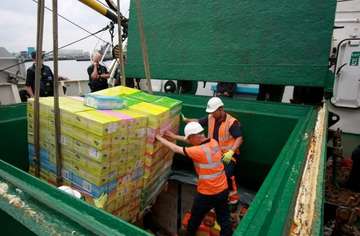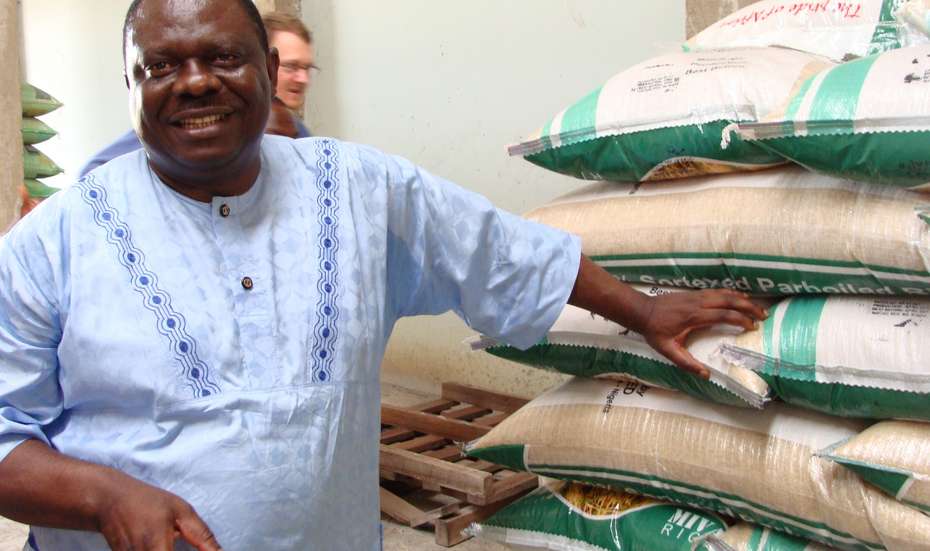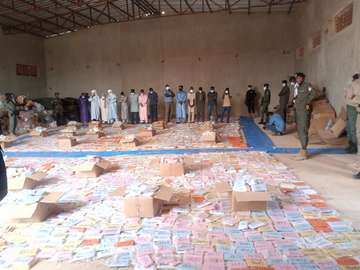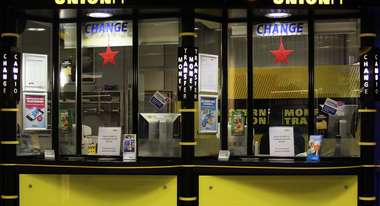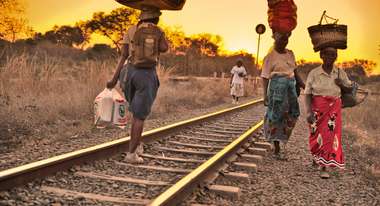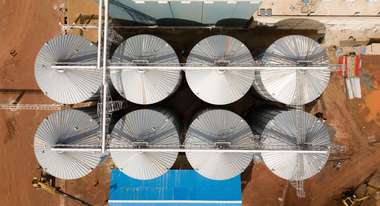Smuggling: Image & Reality
While smuggling has captured the imagination of painters, screenwriters and policymakers, its reality often looks more diverse. What are we missing, and what can we learn from it?
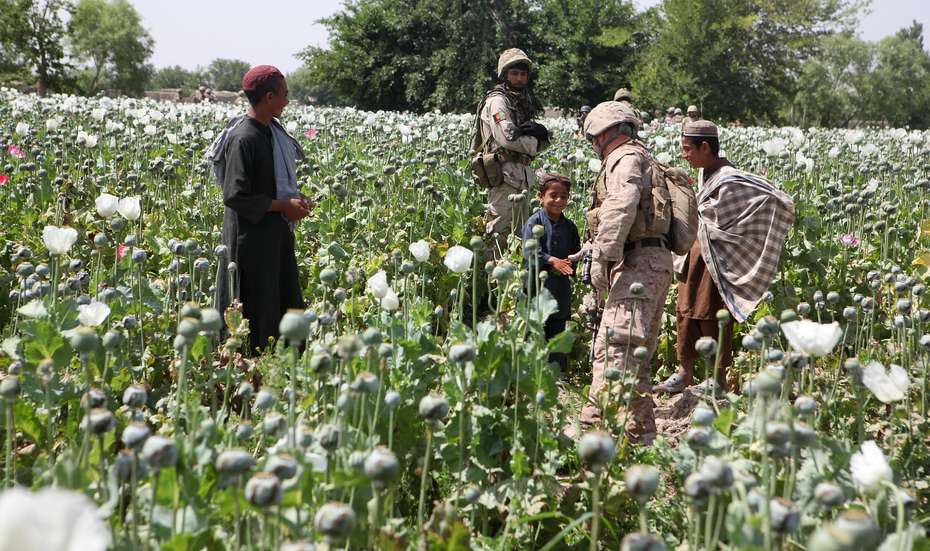
When we think about smuggling, a range of images dominate the public imagination, images that have graced the covers of books and magazine articles on the topic for decades. Historically, we think of shady figures, pulling goods onto a misty shore in the moonlight, a ship in the distance. More contemporarily, we think of hooded figures loading bricks of cocaine into the back of a 4x4, or of the violence of cartel and gang wars.
These images, however, present a small and easily misleading perspective on the reality of smuggling today. Smuggling is more widespread, more diverse, in many ways more mundane, and more deeply embedded in the logics of global trade than we commonly think. It is also, from a European perspective, much closer to home.
In the following pages, we seek to provide a sense of what smuggling can look like in the 21st century - and why a more precise picture of it matters, for conflict, and for policy.
Smuggling is defined as the purposeful movement across a border in contravention to the relevant legal framework. This may seem somewhat dry and uncontroversial, but hides within it the tensions that have made the idea of smuggling a point of contention and discussion, and at times of struggle and violence, between states, businesses and border communities over the centuries. Smuggling is determined by borders and by laws – without them, it is simply trade.
And ‘simply trade’ is how many borderland communities will refer to the movements of goods and people across their land. They may point out that their movements and practices have frequently been going on for centuries, and can be older than both the borders that make it cross-border trade and the laws that make it illegal. They may remind us that often they did not have much say in either the drawing of the border or the making of the laws. They may even refer us to the fact that both the drawing of borders, global trade rules and in particular the legislation around the criminalisation of certain narcotics have been deeply tied in with the logics of empires, with racist moral panics and the dispossession of land.
And so, to the common images of smuggling that we already have, it is important to add the long histories of cross-border trade that is embedded in borderland communities, that was not born from an incentive to subvert state rules, but struggles to survive alongside them.
Smuggling beyond smugglers
But of course, not all smuggling happens in borderlands, and not all smuggling is small-scale. If smuggling is movement across a border in contravention to the legal framework, this also reminds us that smuggling is not always done by professional smugglers. The image of the ‘smuggler’ is similarly entrenched in the popular consciousness - we think of the Colombian cartels, of human traffickers in the Mediterranean, of swash-buckling adventurers from Han Solo in Star Wars to Yuri in the latest season of "Stranger Things".
And yet, similarly, smuggling can be done on an ad-hoc basis by civilians - many central Europeans for example have stories of smuggling magazines, foodstuff or music across the Iron Curtain, in parcels or the side of cars. Critically, smuggling can also be done by otherwise ‘legal’ businesses. In seeking to avoid taxes and get their goods into new markets, the tobacco industry for example has become infamous for their engagement in and encouragement of smuggling and has paid fines in the billions.
Under-reporting and tax evasion at ports, airports and other formal points of entry by formal firms and influential importers is extremely widespread, especially in low and middle income countries. These practices are often less in the centre of attention than cocaine or arms trafficking, but they can represent a huge loss in taxes to cash-strapped states.
At the same time, they can present an obstacle to genuine competition in many sectors, as particularly rich or politically connected actors can use their connections at the border to undermine their domestic competition, bringing in goods cheaply or triggering lengthy inspections on their rivals. Here, foodstuff and particularly perishable goods such as fruits and vegetables are particularly vulnerable. When Tunisia was still ruled by the dictator Ben Ali, business elites that were close to the president and his family were well known to exploit their connections – rather than stopping, these networks changed and adjusted after the revolution.
Even states themselves can act as smugglers - North Korea is often cited as an example here, which in the past has been involved in smuggling a range of goods from counterfeit currency to arms and narcotics. The current conflict in the Ukraine, the sanctions regime, and the close relationships between the Russian regime and organised crime, all suggest that this topic might become less marginal again soon.
Broadening our view of ‘smugglers’ does not mean that we need to forget about cartels, mafias and more professional smugglers - but it serves as a reminder that addressing them, and engaging with them, benefits from a recognition that they are not isolated criminal actors, but are often embedded in relationships with communities, with formal companies and the global economic and logistic structures, and at times with states and political authorities. Smuggling looks different from what we often imagine - it happens in more places than we think, and involves a more diverse set of actors. Why is it important for us to take a broader view of smuggling? In the remainder of this article, we show how a better understanding of smuggling can help us formulate better policy, and also better understand the relationship between smuggling and conflict today.
Diverse Smuggling, Diverse Policy
How we think about smuggling shapes where we deploy policy measures to engage with it. We often think of smuggling happening in poorly fortified borderlands, with donkeys carrying goods across mountain passes or trucks racing through deserts. Anti-smuggling measures typically target borders, and borderlands, and often focus on low- and middle income countries. In the past decades, a focus on smuggling at borders and in low capacity contexts has led to a focus on heavy border infrastructure, and particularly walls. These also double as powerful political symbols in an age in which concerns about sovereignty and border control have become a standard element of populist political rhetoric.
But for the engagement with smuggling, their effectiveness is often limited. As noted above, much smuggling happens through the channels used by legal actors, and through the logistical infrastructure of international trade - ports, airports, free trade zones. Walls are not effective against this. They also risk throwing smaller traditional border economies into crisis, impoverishing border communities and making them less likely to cooperate with state authorities. This is particularly likely to affect the smuggling of foodstuff and livestock which is often a part of traditional practices and livelihood strategies by borderland communities.
A look beyond borderlands helps to consider the larger actors in smuggling networks, the financiers and coordinators, the political entrepreneurs and wholesalers, who often operate far away from borderlands. Similarly, an effective engagement with smuggling requires considering their entire value chains – to not just focus on low- and middle-income countries, but to recognise more fully the ways in which high income countries function as spaces of consumption, financing and operation for smuggling networks, and how large-scale international companies benefit from smuggling flows. This means taking a look at the complicity of consumption markets – at the effect that demand for cocaine in the city of London or the demand for European eels in some culinary traditions have on smuggling markets.
Similarly, looking at the diversity of smuggled goods can be instructive. While much attention, often for good reason, is focused on a few goods, such as narcotics and weapons, it is worth considering the huge multiplicity of global smuggling markets. There are markets for the smuggling of alcohol and microwaves, the smuggling of race horses and eels, the smuggling of eggs and timber, of Hello Kitty Backpacks and Kinder Eggs.
Taking a wider view of the kinds of goods that are smuggled provides useful lessons. Looking at the smuggling of food can highlight the dual role that smuggling can play in engaging with hunger and poverty. In some contexts, smuggling networks provide rare channels of access to populations that are otherwise cut off from trade channels, or be a crucial source of income for marginalised groups. In other cases, they can divert access to critical resources and drive up prices. For example, the smuggling of sheep from Afghanistan to neighbouring Iran, has resulted in increased meat prices in Afghanistan’s western Herat province.
Looking at the smuggling of elephant tusks for example can serve as a reminder to policy makers that often intervening at the point of transit is too late. The diversity of smuggling across the globe requires a diversity of policy approaches. While policy makers can learn important lessons from comparing the smuggling of different goods, they need to be applied carefully.
Smuggling and armed conflict
Whether we look at Afghanistan, Congo, Syria or Ukraine, wars and armed conflict destroy and disrupt people’s lives around the world. In addition to this disastrous immediate impact of violence, conflicts also affect economies. In particular, armed conflict disrupts trade routes and payment systems. Infrastructure such as roads and trucks are destroyed during war, truck drivers have to fear for their lives and the warring parties set up checkpoints, delaying the transportation of goods and driving up prices by demanding fees and bribes.
Not just legal trade is affected by war, but also the smuggling economy. Smuggling ultimately follows the same rationale as any other business and trade - simply speaking, war makes the smuggling business more difficult and expensive. Just like formal trade, smuggling networks have to deal with the risks of wars and the increased costs that war imposes on businesses. Perhaps, for instance, instead of bribing police or customs officials, smugglers suddenly have to pay at or circumvent various checkpoints established by the various conflict parties. Hence, conflict zones are highly unpopular transit routes for smuggling, with smugglers - like most other businesses - preferring to operate in areas in which there is only one authority and clear rules.
But while conflict zones are unpopular transit routes for some forms of smuggling, they can also create new opportunities. Most obviously, war zones create demand for smuggled weapons. Following armed conflict or during phases of low intensity of conflict there is a surplus of supply that might be smuggled elsewhere. During phases of lower intensity of conflict in Libya, for instance, weapons spilled over to the Sahel, especially Mali and Niger. On the supply side, war zones are also commonly associated with drugs, such as opium from Afghanistan and meth from Myanmar. However, even within conflict zones drugs are often produced in areas of at least limited stability.
Perhaps most tangibly though, armed conflict often creates demand for smuggled food. In particular during sieges of cities, the survival of communities is at imminent risk. In such a context, smuggling can become essential for the survival of affected populations, ensuring access to food. Ordinary people may suddenly become ‘smugglers’ to ensure their survival while more scrupulous businesses may charge hefty surcharges for goods that they smuggled in.
During the long siege of Eastern Ghouta in Syria that began in 2013, Syrian government forces blocked the population’s access to food. Tunnels controlled by rebel groups offered a lifeline, enabling the smuggling of essential foodstuff. However, also businesspeople with good connections to both the government and the rebel forces operated in the area, transporting goods on the main roads with full cooperation of the warrying parties. These smugglers successfully further monopolised the market when the tunnels were targeted by the military and even successfully exported goods from Ghouta to Damascus.
War can even disrupt financial services and even payments may also have to be ‘smuggled’ during or following armed conflict. For example, following the Taliban-takeover of the Afghan state in August 2021, many financial services in Afghanistan were interrupted due to international sanctions and the freezing of national assets, creating new challenges for the payments of traded goods. Hence, left without alternatives, an increased number of financial transactions to the country had to go through indirect networks.
Conclusions
When engaging with ‘smuggling’ today we have to overcome the images that have dominated our thinking and look beyond the figure of ‘the smuggler’. Looking at the empirical reality illustrates that smuggling is characterised by a diverse set of practices, conducted by a diverse set of people. Smuggling is not limited to drugs and weapons. Smuggling may bring food into a besieged city or take goods out of it - context is key. Smuggling is also not a phenomenon that is not limited to developing countries or remote borderlands, it is often driven by demand in Europe and uses the global trade infrastructure. Ultimately, smuggling brings together diverse groups of actors while remaining defined by borders and laws. To understand smuggling, it pays to look beyond the label itself, and beyond the common imaginaries.


The authors are the editors of the Routledge Handbook of Smuggling (2022). The entire handbook, which contains over 30 chapters on different forms of smuggling, the relationship between smuggling and conflict, mobility and policy, is available to download for free on www.smuggling.page
